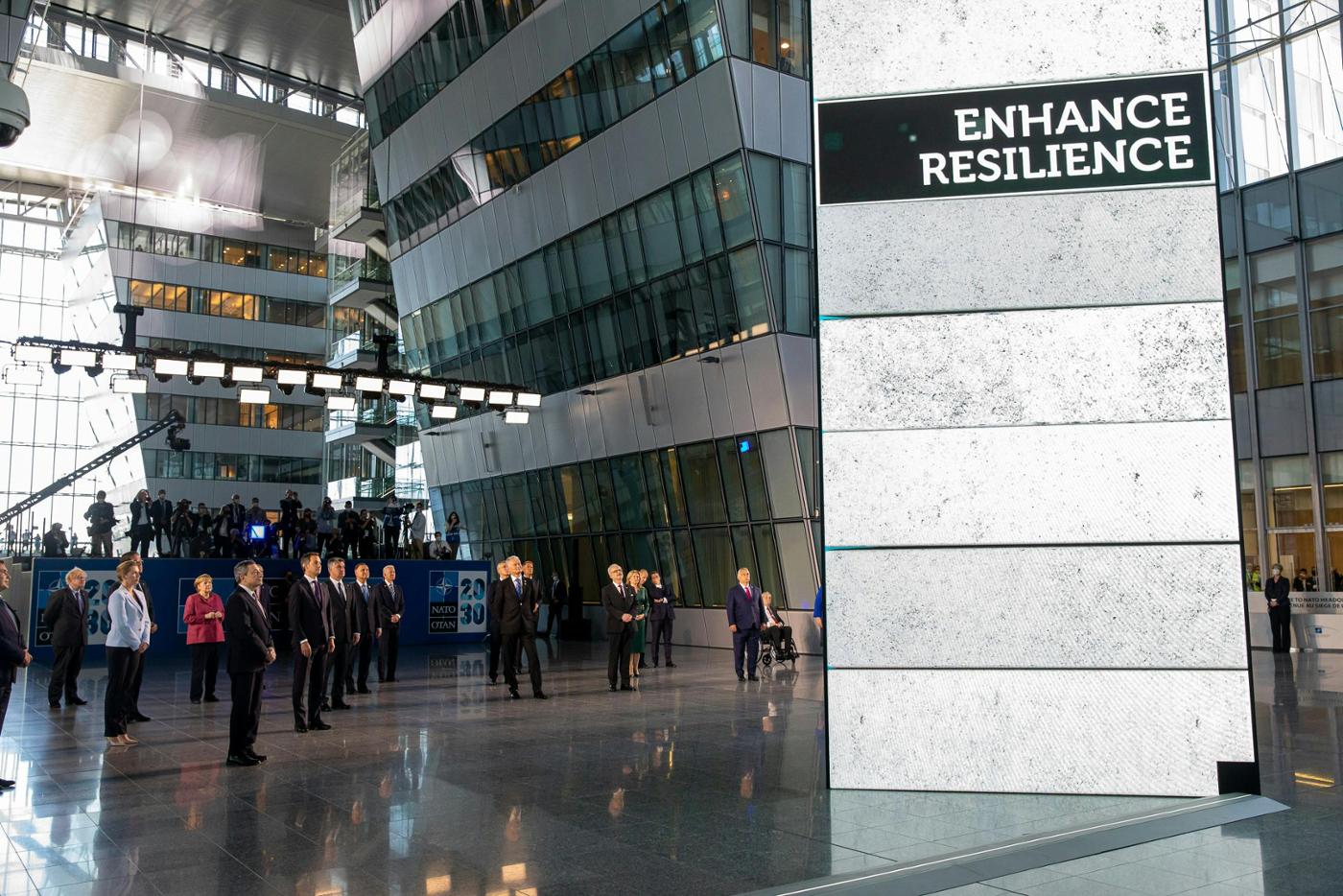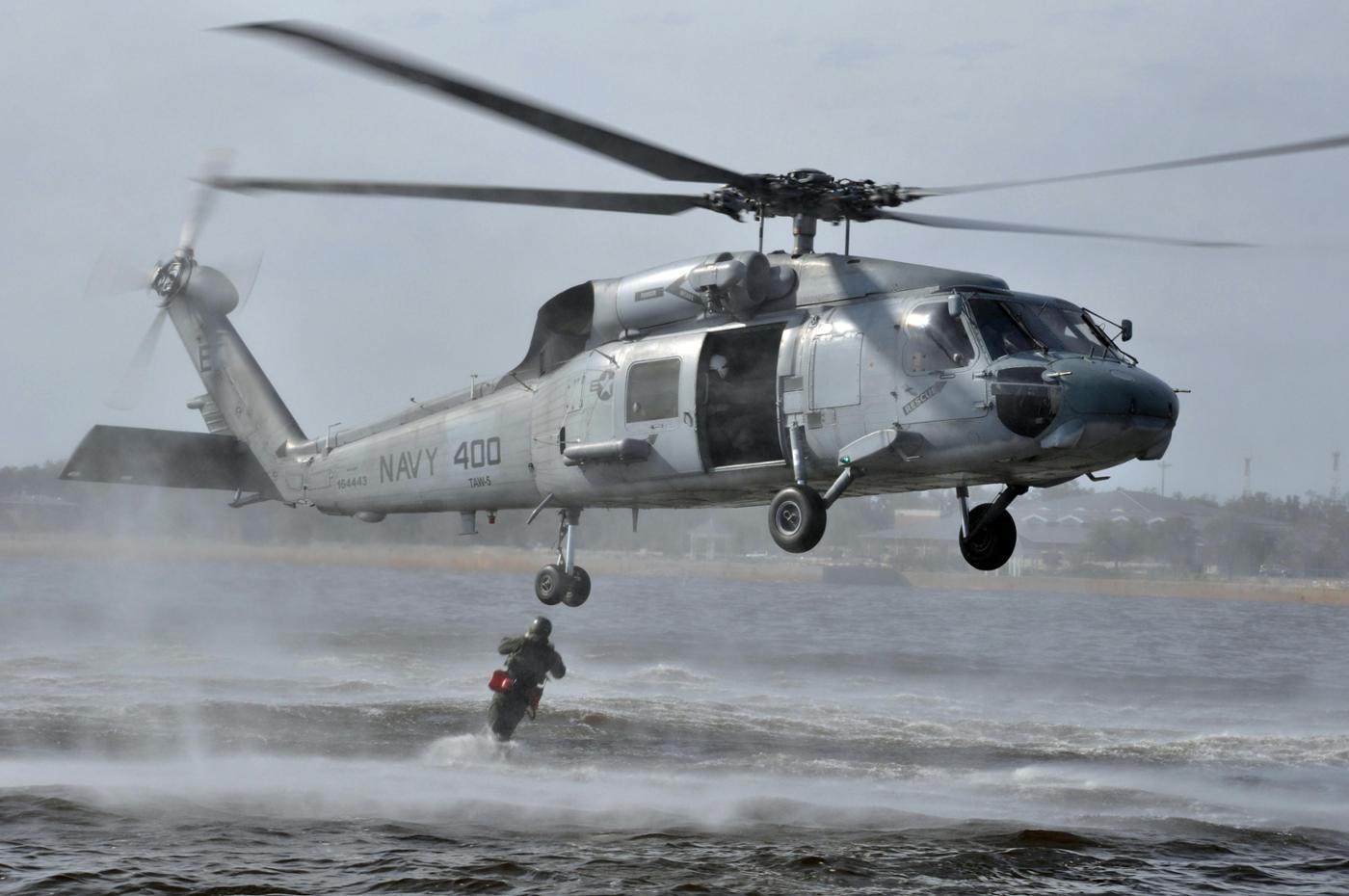NATO’s 2022 Strategic Concept defines climate change as a “crisis and a threat multiplier”, but what does that actually mean for NATO’s ability to deter and defend?
At the NATO Summit in Brussels in 2021, Allies agreed to put climate change at the top of NATO’s agenda, endeavouring to become the leading international organisation when it comes to understanding and adapting to the impact of this epochal phenomenon on security. The new Strategic Concept, which was agreed at the 2022 Madrid Summit, reaffirmed this commitment. Since then, NATO has produced several flagship reports on the topic, which show how the effects of climate change have profound impacts on everyday life. However, there is still a strong need to explore how climate change affects NATO operations across different domains.
This article explores how climate change is already shaping maritime security challenges for NATO, and what the Alliance intends to do to maintain its readiness and resilience in the maritime domain. As a specific use case, it presents some of the work being conducted by the new Climate Change and Security (CC&S) Department at NATO’s sole research centre: the NATO Science & Technology Organization (STO) Centre for Maritime Research and Experimentation (CMRE), based in La Spezia, Italy.
Climate change-related security risks in the maritime domain
The range of potential NATO operations is expanding and evolving as the geopolitical, military, economic, social, climatic, and technological landscapes change. Space, the info-sphere, and urban domains are particular areas of rapid evolution. However, as highlighted in the report on NATO’s Science & Technology Trends: 2023-2043, competition in the maritime domain will be of significant importance in the near future. Some of the challenges that NATO will have to face at sea include the protection of critical underwater infrastructure, supply routes, and exclusive economic zones. However, among the many possible threats to NATO’s readiness and resilience in the maritime domain, climate change is arguably the most significant. It already does and will continue to influence NATO doctrine, operations, assets, bases, and infrastructure in the years to come.
Doctrine
Climate change has a “multiplier effect” on other security phenomena, including conflicts and competition for scarce resources. The increased occurrence of natural disasters and climate-related crises will require the more extensive deployment of armed forces and a wider adoption of dual-use and autonomous platforms such as unmanned underwater vehicles. Environmental changes driven by climate change are not linear nor gradual, and there are exponential risks associated with “tipping-points” that can easily lead to abrupt instabilities. To be able to face and successfully adapt to the changing environment at the speed of relevance, NATO Allies must immediately begin to acclimatise their military doctrines.
The way armed forces fight depends on a wide array of factors, including culture (of the service and the country in question), the design of military institutions, immediate threats and operational environment. Climate change will have deep, long-term and non-intuitive effects on these factors and, thus, on military doctrines. Growing awareness about climate issues will shape how, why and where military forces operate. Climate change will therefore affect the way armed forces are designed for the contingencies they have to address. Altogether, significant doctrinal adaptation is likely to occur and be necessary, especially in order to integrate new technologies and capabilities
Operations
Changing environmental conditions and increased human activity will affect operations and reshape the geostrategic relevance of whole areas. For instance, in the Arctic - a region that is warming almost three times faster than the global average - the melting of sea ice is facilitating resource exploitation and opening new seasonal maritime routes. From an operational perspective, this could mean that NATO will have to ensure freedom of navigation and unfettered access to this challenging environment. While some Allied countries have considerable Arctic operational experience, the reality is that an increase in military activity in the High North may present a capability gap for NATO. In fact, as of today, only a handful of Allies have formal High North strategies and significant Arctic capabilities (e.g. a fleet of icebreakers). Freezing winters with sea ice, short summers, highly variable weather conditions, limited logistic support and satellite coverage at high latitudes all pose additional risks to human health and platforms/equipment not prepared to withstand such conditions.
Assets
Naval assets, platforms and sensors are affected by environmental conditions that are exacerbated by climate change, including changes in atmospheric density and heavy rain, which disrupt the performance of naval radars, directly affecting situational awareness. Similarly, higher oceanic temperatures modify underwater sound propagation, affecting sonar (the main sensing tool for detecting submarines) performance. More frequent maintenance cycles for ships are expected as consequence of ocean acidification caused by the excess of carbon dioxide absorbed by the seas. Naval propulsion systems forced to operate under unprecedented high sea temperatures and salinity, or not properly cooled down because jellyfish clutter filters, are subject to engine overheating and failures.
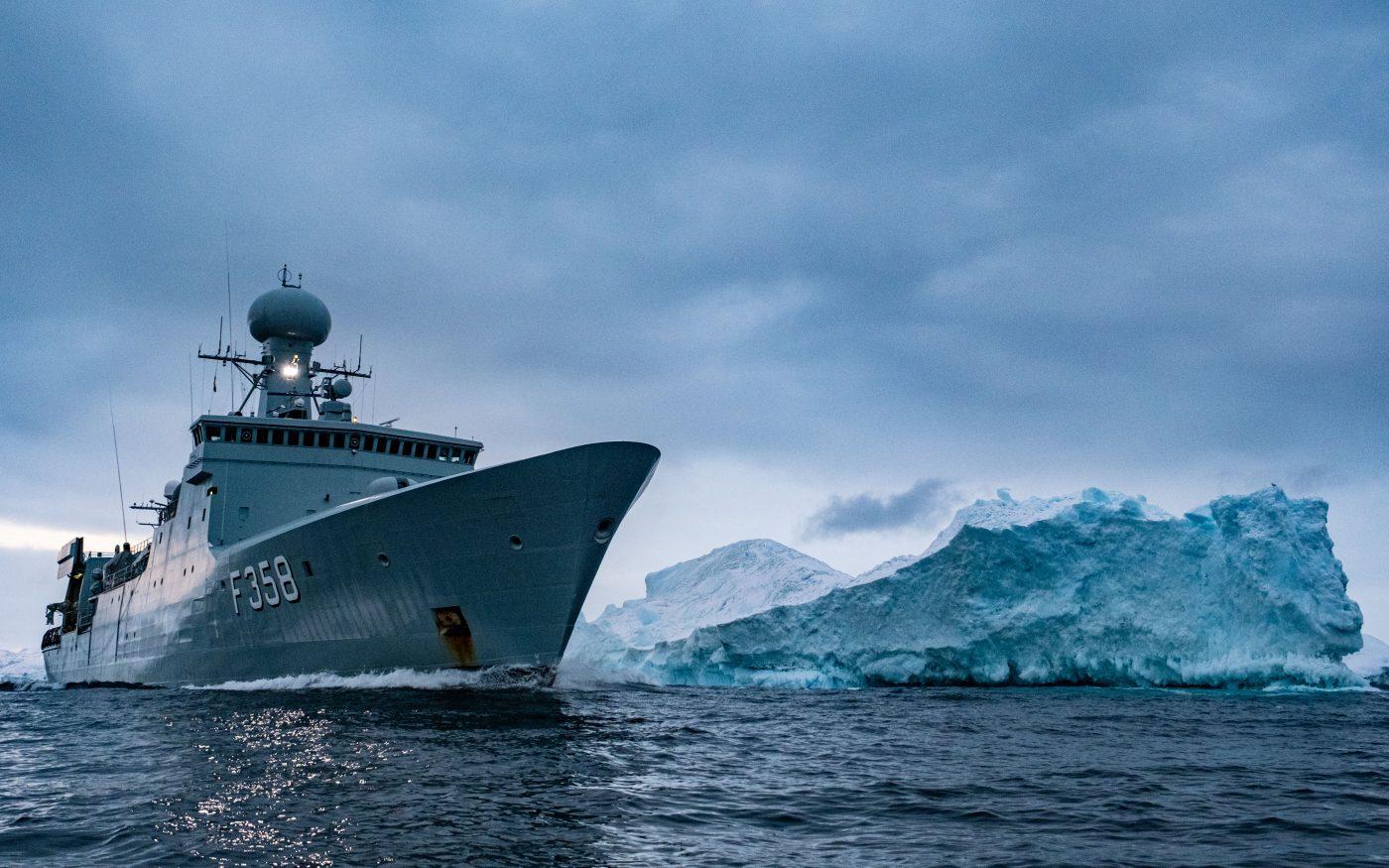
The Royal Danish Navy frigate HDMS Triton is part of Joint Arctic Command Denmark, which is responsible for fisheries control, search-and-rescue and environmental monitoring, and contributes to the security and defence of the High North. © NATO
Bases
The increase of maximum air temperatures close to or exceeding 40°C in some areas will produce thinner air, reducing the lifting capacity of naval helicopters and limiting their take-off from coastal bases. In addition, the combination of high air temperature and relative humidity will generate an increase of “Black Flag Days”, during which physical training and strenuous exercise is suspended. Naval facilities are also impacted by increased droughts, inundations due to sea-level rise, storm surges and other extreme weather events, which significantly lower their readiness and operability levels.
Infrastructure
Critical underwater infrastructure, upon which the vast majority of global data traffic and energy supplies rely, is becoming increasingly targeted by malicious activities (e.g. the recent attacks on the Nord Stream 2 pipeline and Svalbard cables). They are also increasingly exposed to extreme events such as hurricanes and storms, which are becoming more aggressive and frequent in the context of warmer oceans.
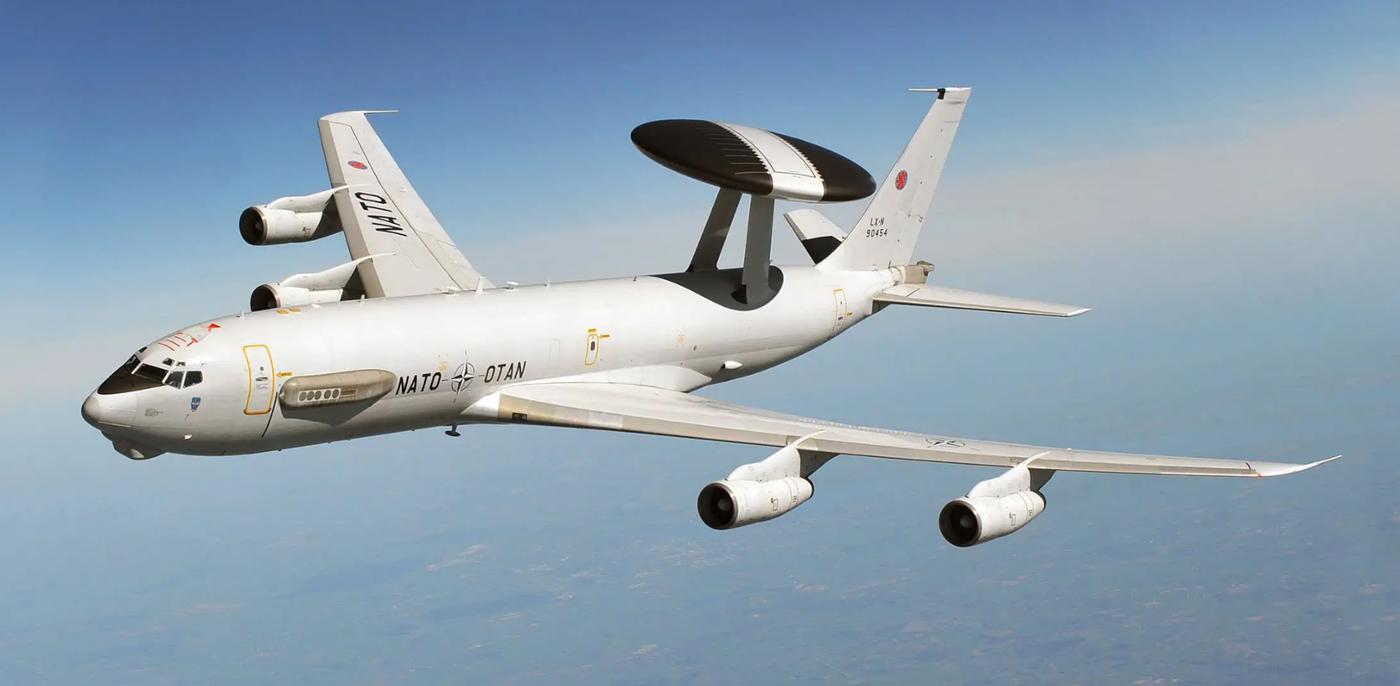
Following recent damage to undersea infrastructure in the Baltic Sea, additional surveillance and reconnaissance flights, including maritime patrol aircraft, minehunters and drones have been dispatched in the area. © NATO
The new Climate Change and Security Programme at STO CMRE
All of the above-mentioned impacts need to be assessed both qualitatively and quantitatively, and this is the essence of the CMRE’s current and future research efforts. Relying on its well-established expertise in maritime research and Arctic studies, the CMRE has been commissioned by the STO Office of the Chief Scientist to investigate the emerging security challenges posed by climate change and its future impacts on Allied capabilities. Here are some examples of studies that the CMRE has launched:
CMRE is studying different climatic events (e.g. El Niňo-Southern Oscillation) to shed light and obtain better insights regarding the climate change and security nexus.
At the same time, the CMRE team is conducting in-depth analysis on the impact of climate change in NATO operations and systems, with emphasis in the maritime domain. Some of the research includes:
- Operations: Climate change has an impact on sea state conditions that may limit maritime operations. With respect to helicopters, one limitation concerns the difficulty (or even possibility) of deploying an operator for castaway recovery during Search and Rescue operations.
- Systems: Some of the work includes research on how climate change and global warming directly influence sonar performance and underwater acoustic communications. The CMRE team has performed studies on associated impacts on the performance of sensors that rely on the electromagnetic spectrum.
Besides these studies, which involve Big Data analysis (i.e. the use of algorithms and visualisation techniques to make sense of large volumes of data), field trials are also conducted. For instance, in July 2023, the NATO Research Vessel Alliance deployed deep moorings (i.e. moored vertical lines with several oceanographic and acoustic recorders distributed along the water column) in the Arctic seas. The purpose of this activity is to create the first NATO Arctic Climate Observatory to monitor temperature, salinity and ambient noise evolution in the Arctic region, specifically the Fram Strait and the northern Norwegian Sea over the long term. These regions are of particular interest because they are among the most impacted by global warming, exhibiting larger temperature increases and significant changes along the whole ocean water column. Data obtained will support research in critical areas of operations for NATO, still largely understudied.
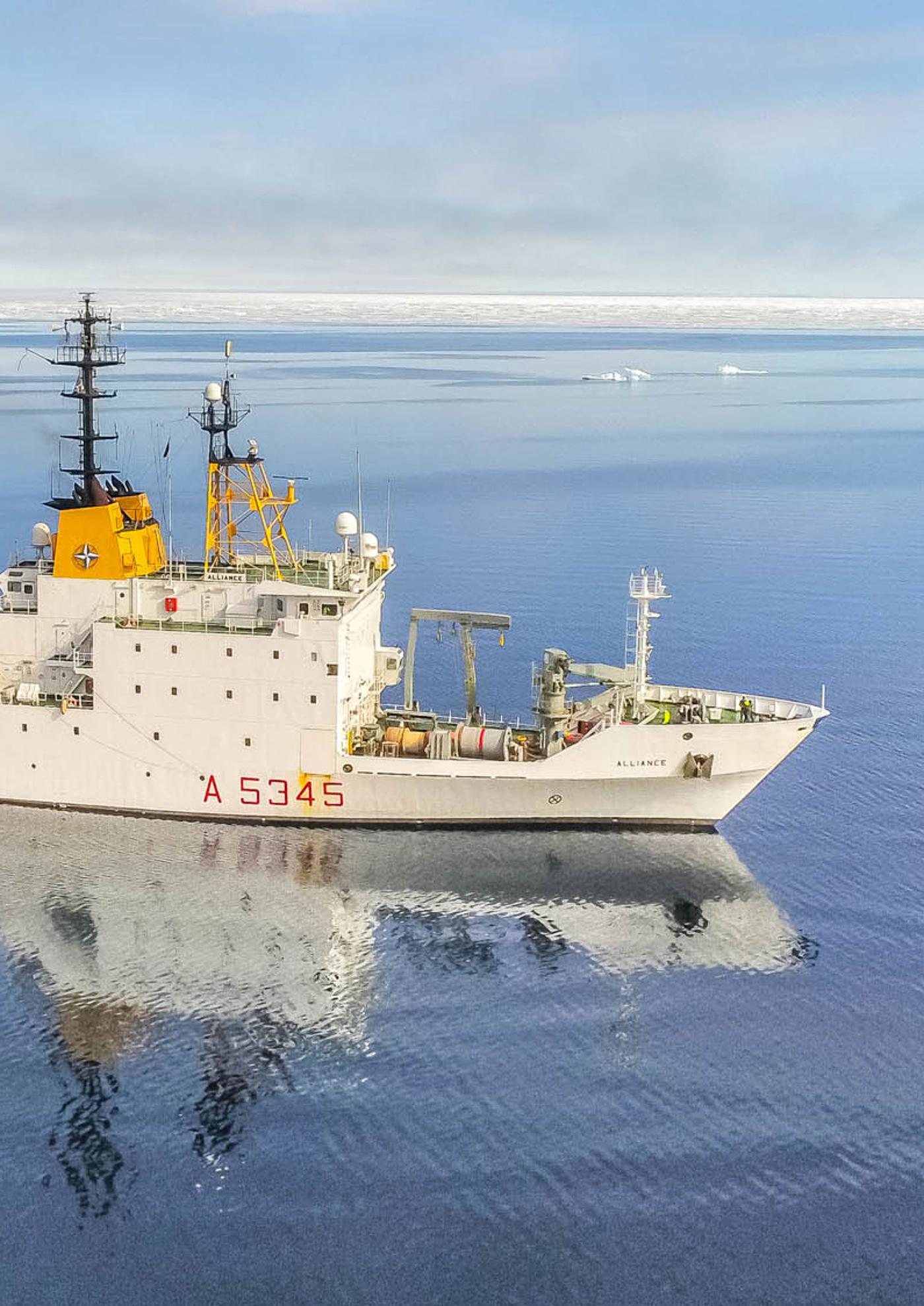
The NRV Alliance operating at the sea ice margin during the NREP23/ACO23 sea trial in July 2021. © NATO STO-CMRE
Furthermore, in agreement with the strategic objectives of the Data Exploitation Framework Strategic Plan, and the priority use cases therein identified, the CMRE is also focusing on the link between climate change research and new technology applications, namely AI-assisted decision-making and cloud based products. To boost its outreach and to create awareness, the CMRE is also building a network of partners and designing new higher educational paths for providing the Alliance with key expertise needed in this extremely relevant field. In fact, at the 2023 NATO Summit in Vilnius, Allies welcomed the establishment of the NATO Centre of Excellence for Climate Change and Security, hosted by Canada, which, among others, will aim to fill knowledge gaps about climate change impacts on the maritime domain.
Conclusion
The new challenges dictated by climate change and the consequential security effects on the maritime domain will require considerable research efforts by NATO and Allies in a historical period that is already stretching forces thin and challenging global stability in ways not seen since the end of the Cold War. Nevertheless, the core meaning of the term “resilience” itself is to be reactive and proactive in times of crisis and shock. The grand vision behind the CMRE Climate Change and Security Programme is its interdisciplinary vocation as a common ground where scientific, academic, military and political contributions can merge, providing the best assessments to understand how climate change influences NATO maritime capabilities.
A wider awareness of what is at stake may lead to universal understanding that solutions can be achieved only through cooperation and innovation. While this is surely a complex challenge, NATO has all of the capabilities to navigate it successfully, and leading this change is the best warranty to ensure the fulfilment of the Alliance’s core tasks and foundational values.

